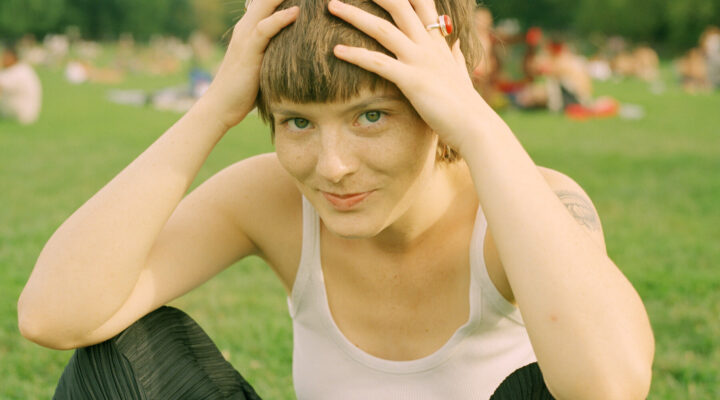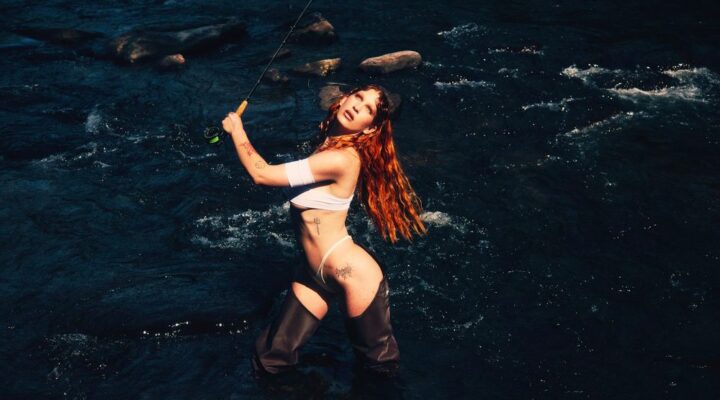The War On Drugs
New album Lost in the Dream wasn’t an easy ride for Adam Granduciel and his men. Taking over a year of re-recording and editing, they finally delivered a wondrous and intricately detailed record that harbours some of Granduciel’s most inspiring songwriting yet. We sat down with The War on Drugs frontman on one grey Amsterdam morning and talked schticks, painting and the idea of home
Interview by Brenda Bosma, photos shot by Isolde Woudstra in Amsterdam, Netherlands
There seems to be a difference in the overall sound between this album and the previous one, Slave Ambient. Do you ever look back when a record is done?
There’s a big difference between the two and it’s almost all I think about. On the new one the songs are better and the sound is much wider. It’s less huddled over my home gear, more song-based instead of sonic-based. Slave Ambient didn’t say anything from a personal perspective. For this one I wanted to express myself more, be more open and have something more to hold on to rather than just this idea of the band. I wanted to grow as a writer, producer and bandleader, connect more.
There are also no ‘oohoos’ on this one and I counted no more than two howls. Was that a deliberate choice?
Yeah, ’cause it sort of became a schtick . Actually there were a lot that were edited out, because yeah, I did do them, even though I must say they were more breathy ‘oohoos’ this time. But it just didn’t fit the idea of the songs being more of a mood.
About that mood. Big themes hover over your songs. How do you go about writing them?
I love the act of recording, adding stuff when I get another idea or mood, then I also love to chop things. It’s an almost endless process. All these songs started at my house. The original track, the idea, is usually the one I keep and build upon. Then I write the lyrics in bits and pieces as I go. In the last stages, when mixing the songs, that’s when I do the final vocals. By that time I would have gotten more of a feel for the song, and no less than eight months might have passed. I compare it to painting. I wasn’t a really good painter – my paintings always looked like a mess – but I liked the idea of getting lots of colours on there and scraping it off again, then seeing it in a new way.
Bob Dylan said that creativity is a freight train that is going and going and that you cannot do a lot to stop it, you just have to respect it and not think about it too much.
I agree with that.
That train springs to mind when listening to the album, like it’s in perpetual motion. Then you end the album with the song ‘In Reverse’. You go back again? Where to?
I think the idea of home is a big thing in a lot of music, finding your way back to that place of comfort and looking for the easiest way to get there, and having the feeling you can get there easily.
Do you want it to be easy?
No, but I want it to be enjoyable. I think part of the journey of this album was trying to find the enjoyment in what I was doing. Making music for me has always been very therapeutic. Then when I found myself having it collide for me, I found it incredibly hard to find enjoyment from it in the same way I had. I didn’t enjoy making this record. Still, I worked on it a lot, I didn’t cut myself any breaks. Now when I listen to it and I’m out of the editing phase, I really enjoy it.
So, can we maybe expect more ‘oohoos’ from your live shows?
No problem. It’s interesting, when I started to play the songs live with the band, hearing them come to life, it’s then that it will take on that new role, where the heart of the song will keep changing. I like that a lot.
The War on Drugs headline Le Guess Who? May Day alongside Neutral Milk Hotel, Future Islands, Sun Araw & Laraaji and Black Lips on 24 May. Catch them at 21.20 in Tivoli’s Oudegracht. For more information and tickets visit leguesswho.nl.



